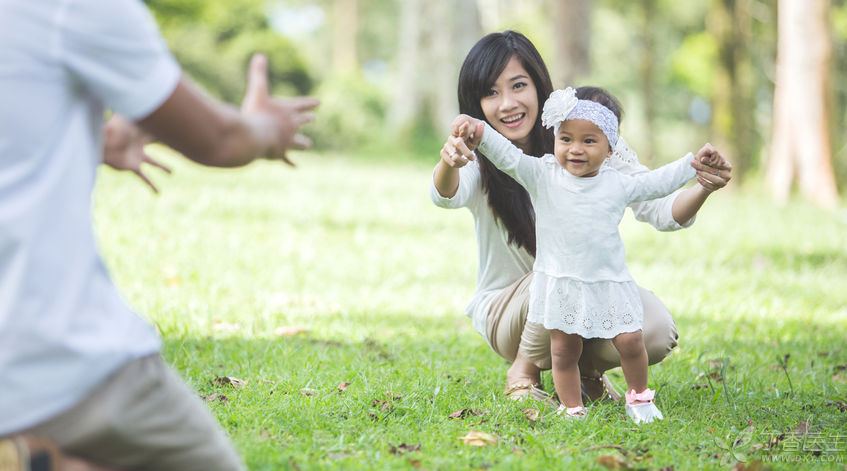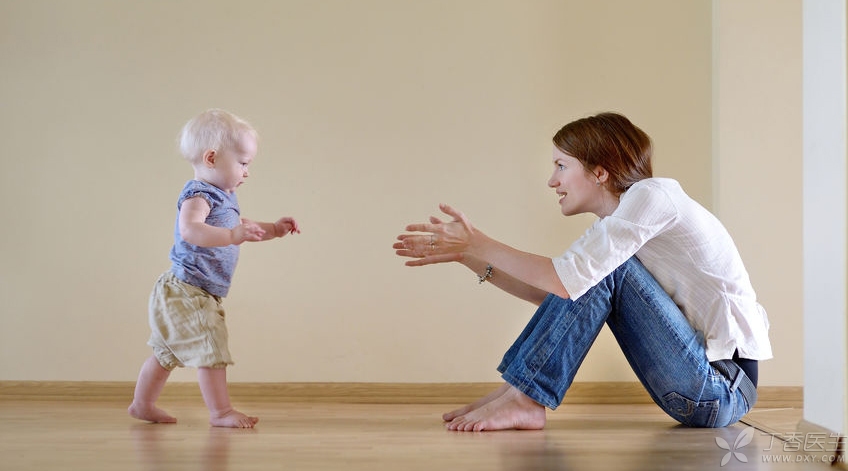When a group of mothers get together, such topics are definitely inevitable:
My baby can already climb. When I was not careful, he climbed from the middle of the bed to the bed.
My baby can already sit. At first, he had to hold it. Now he can sit on his own. His back is straighter than that of adults.
My baby can stand on the armrest of the sofa.
…….
Seeing that other people’s babies can climb, stand and even walk, while their babies always seem to be half a beat slower, mothers cannot help worrying: Do they really lose at the starting line?
In fact, every baby has its own development track. Parents need not worry too much or intervene in a hurry. Just let nature take its course.
At the same time, parents can help babies to better master these big movements by doing some appropriate training and guidance at home.
Today, we invited Feng Xueying, a child health doctor, to teach her parents how to guide the baby to sit, climb, stand and walk. After learning these scientific methods, you will proudly tell your baby’s learning progress in the next discussion.
Sit
When will the baby sit?

When the baby is three months old, hold his waist and he can sit up.
Babies aged 4-5 months can sit with their backs arched.
Babies aged 6 to 7 months can sit straight up.
When the baby is 8 months old, he can sit twisted.
How can we get the message that the baby wants to sit? Here is a little trick to judge:
When the baby lies on his back, the parents hold the baby’s hands and feel that the baby takes the initiative to pull the adult’s hand and can stand up and leave the bed surface, indicating that the baby wants to sit up a little. This kind of signal generally appears in about 4 months, and parents do not need deliberate training before 4 months.
When the baby is 4 months old, parents can start to help the baby practice pulling and sitting. At first, they can gently hold the baby’s shoulders with both hands, pull him to sit up, and then gradually transition to pulling the baby’s upper limbs and hands. This is to cultivate the baby’s awareness of taking the initiative to stand up,
In the process of pulling and sitting training, parents need to pay attention to the following points:
- When holding the baby’s upper limb, If his head is completely tilted back, Parents will go back to pull the shoulders again, waiting for the baby to take the initiative to look up. Parents must feel the baby in the initiative to pull your hand hard, can take advantage of the situation to pull up. When the baby exerts, the upper body will bow up, both upper limbs will also slightly bend. Remember, parents must not use all their strength to pull the baby, so as not to cause the baby shoulder dislocation.
The pull-and-sit training lasts for about half a month, and when the baby is 5 months old, he can practice sitting-and-sit.
At this time, the baby can be leaned against the cushion, sofa, parents’ arms, etc. These postures can allow the baby’s waist to have external support.
Under the condition of ensuring safety, the 6-month-old baby can begin to train the baby to sit alone.
Shake the toy above the baby’s head to attract him to support his waist and sit independently for a few seconds, gradually prolonging the time.
After that, parents can put toys on both sides, back and forth and other places to train to twist and sit.
Sitting training must be carried out when the baby’s mental condition is relatively good, and the baby should be trained by means of games.
Every kind of training should be carried out step by step, and the sitting time should be from short to long.
Each baby has different time to master the skills of sitting alone. It is normal to learn to sit at the age of 5-7 months, so parents should not have psychological pressure.
Climb

Having said how to [sit], let’s talk about how the baby should learn to [climb] this movement.
As parents, how can we guide our babies to learn to crawl?
When the baby is 1 ~ 3 months old, the mother can use toys to attract the baby to look up and train the baby to lie prone and look up.
By the time the baby is 4 ~ 5 months old, he can support his chest with both hands and leave the bed surface, indicating that the baby can already start crawling in his abdomen.
When the baby is 6 ~ 7 months old, parents will find that the baby starts to spin around, retreat and gradually climb forward.
At this stage, the baby’s limbs are not strong enough and will be rolled instead of crawling, so it is especially easy to roll down from the bed or sofa, so it is better to let the baby practice on the ground and crawling mat.
When crawling training for the baby, the mother can attract the baby with toys in front of him to give the baby the motivation to move forward, while the father can hold the baby’s feet with his hands behind the baby, but do not push him, so as to train the strength of the baby’s lower limbs. At this time, the baby will often take the initiative to kick his legs.
By the time the baby is old from August to September, the strength of the baby’s upper and lower limbs is getting stronger and stronger, and he can begin to crawl with his limbs.
In order to increase the baby’s crawling pleasure, you can attract the baby with interesting items, use soft cushions as obstacles, hide the toys that the baby likes in places where the baby can climb, etc.
It should be noted that at this stage, all the furniture with corners and edges in the home should be wrapped with soft cushions and the power socket on the wall should be properly treated with insulating materials.
Station

When does the baby stand in what?
Generally speaking, when the baby is 7 ~ 8 months old, he will [help the station].
At the age of 9 months, the baby can master [catch station]
From October to November, the baby can stand alone.
Some parents see that other children will catch the station, but their babies will not be able to do so, so they will be very anxious, so they will continue to train their babies to help the station.
In fact, it is better to let the baby climb more at this time. Because crawling can exercise the strength of the baby’s upper and lower limbs and waist, it can prepare the baby for standing, and it is also conducive to the coordination of the baby’s later movements.
Therefore, if the baby does not take the initiative to catch the station, let the baby climb more.
What parents need to pay attention to is that the development of big sports is a natural process. If you haven’t fully learned to crawl, when you catch the station, the strength of your baby’s legs will be insufficient. If your baby’s weight happens to be overweight, it is likely to lead to the deformation of your lower limbs.
Therefore, training your baby to stand must follow the rule of gradual and orderly progress, climbing first and then standing. (Individual babies will walk from sitting to crawling)
Go

Between the ages of 1 and 2, he will slowly master the skill of walking.
Here, parents are not recommended to use tools such as walker and walker belt to help their children learn to walk.
In the walker, the baby can rampage on the rampage without worrying about falling down, which is not conducive to the baby to establish his own sense of balance and even delays the time of walking independently.
Of course, when parents are not convenient to take care of their children, it doesn’t matter to use them occasionally.
Before the baby walks alone, he will like to help things, such as sofa, wall and bed. This can help the baby to establish a balance. Under the condition of ensuring the safety of the baby, parents do not need to come forward to help.
Finally, I would like to remind parents that the development of infants’ big movements has its own natural laws. Each child has its own rhythm and will not grow up completely according to the laws in the book. It is normal to be 1-2 months earlier than the standard age.
If it is found that the baby is slightly behind in a certain movement, parents need not be too impatient, and it is good to train according to the above methods so that the baby can move forward along its own development track.
However, if the baby is found to be more than 2 months behind, it is recommended to go to the hospital for examination to find possible development problems as soon as possible.
